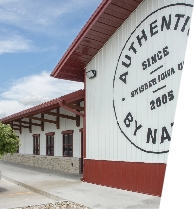This comprehensive guide will help you tackle your spring cleaning like a pro, ensuring your house is in top shape for the sunny days ahead. [...]
When selecting materials for your building project, roofing choices play a crucial role in the structure’s overall safety profile. Metal roofing has gained recognition among [...]
When it comes to building for the future, sustainability isn’t just a buzzword – it’s a priority. At American Building Components, we’re committed to providing [...]
Those in areas prone to below-freezing temperatures are likely familiar with ice dams and the costly damage they can cause. With winter weather already upon [...]

Whether you’re a building supply store looking to stock ABC products, a homeowner wanting to upgrade to metal, or contractor working on your next project, buying ABC products is easier than ever!